Marcel van Marrewijk's Blog, page 100
November 21, 2017
Interview with Joris Pals from Vin Voyeur

Throughout the ten years since Seats2meet started its operations, lots of people came and gone. Today we publish an interview with Joris, a former employee that worked through the Utrecht CS location and now, as he said, evolved into an entrepreneur. Just like a Pokemon!
Hi Joris, could you tell us a little bit about yourself?
Hi Seats2Meet community, my name is Joris, I live in Amsterdam, am a shy fellow so thanks for having me through this written channel. Professionally I like to see myself as a strategic designer and entrepreneur. Strategic design is the process of researching a problem and design a solution including a viable business around it through the process of design thinking. I like this iterative and applied way of conducting innovation. I do it on my own products but also as a freelancer.
You worked for S2M for a while, what did you use to do here?
It was my student job, worked as floor worker. Prepping lunch and cleaning meeting rooms. The work wasn’t too complicated. A cool thing is that you meet lots of great entrepreneurial and autonomous people, that kept me coming back for a while.
And now you are an entrepreneur! How was that transition?
More an evolution, like a Pokemon. I have always known that I want to develop my own products and concepts, that’s why I studied innovation. Last year I launched my first company named Savvy, it was the first healthy sports drink of the Netherlands. I was surprised that however most people exercise sports for health benefits, sports drinks are just sugar water. Savvy was a cold-pressed fruit and veggie juice with whey protein, free from conservatives and heating. It contained the actual nutrients you need when your body is recovering from exercise. I sold the company to a distributor who loved the concept and the brand and will scale it from next week on, that’s when it gets relaunched.
The product you just launched, Vin Voyeur, is a game for people who want to know more about wine while getting drunk. Can you explain us the rules?
Haha, you make it sound like a drinking game. It’s a wine-game, let me nuance it a bit. Vin Voyeur is an exciting social game experience immersing you in the world of wine. Fun is as important as the intriguing lessons about wine. Gamification let you be the curious Voyeur who dares to seek reference to the logic that makes wine sexy. Games are quizzes, experiments, and assignments where your senses and consciousness are challenged in a fun way.
And how did you come up with this brilliant idea?
I was looking for a way to learn relevant wine knowledge that allows me to make choices at the shop or at restaurants but was very frustrated with the available solutions which are boring and time-consuming. So the challenge was to find a way to make learning about wine fun, less time consuming: in not more than one daypart and above all the knowledge should be applicable. The essence of enjoying wine is the presence nice people in a good atmosphere, good vibes… So, it makes sense to make a social drink setting the starting point of our game design. This is why for this game you invite your best friends to play with you. For inspiration for the graphical design of edgy festival decors. gamification will seduce you to participate actively and actually remember stuff despite the alcohol consumption.
With how many people can you play Vin Voyeur?
3 is a crowd, but you can play with up to 8. With over eight it becomes hard to centralize the attention.
You launched a crowdfunding campaign. How can people support? And what are the rewards?
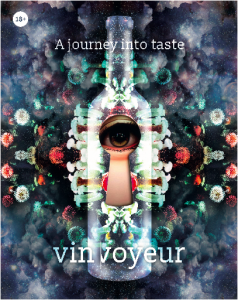
True, At crowdfunding platform Crowdaboutnow we run a pre-sales campaign. Buying now rewards you with an early bird deal. For those who are looking for a Christmas present or Christmas relation gift, this is the chance to be very original and we have a special offer. The Crowdfunding allows us to validate the market for the product since it’s completely new in its category. Besides the production of the game in the quantity of our first batch is expensive so pre-sales allow us to make these expenses without spreading equity.
In your opinion, what is a wine that everyone should try at least once?
For a year I’m paying attention to what I drink. What I experience is that understanding the logic how a wine obtained its specific taste is what enriches the experience. I encourage everyone to be more conscious and chose quality over quantity. We provide a selection of great affordable wines with the game and added a short explanation about the journey of its taste. It all relates to what you can experience when drinking. This is what brings the wine to life. In my opinion, people should try these.
Weird question
You decide to become a supervillain. How would you conquer the world?
LOL..
I will drive all the manure surplus into 500 abundant ships and drive them into the Nile in Egypt. After cruising upstream for a bit and a while I will take a shuffle and create a river branch that leads into the desert. We drive our boats down that branch and while doing so we start ditching the manure to fertilize the soil. The rainforest that will exist will give shelter to my army. How we conquer the world afterward? life in the ever-expanding rainforest let us realize that conquering the world was just a brain-fart, Hakuna Matata.
Profound question
If you could destroy one thing for good, what would that thing be? What does this accomplish?
The dogma that growth is the synonym of progress. This will lead to a society where fake scarcity makes a place for an abundant mentality. Monnik, a scenario developers duo in Amsterdam pitched the idea and I love it.
The post Interview with Joris Pals from Vin Voyeur appeared first on Seats2meet.
November 20, 2017
Consciousness-expansion games

If you’re not a gamer, but you dig yoga — that’s for you.
There are many reasons why we play. Some are quite evident – the first layer of the onion: we play to challenge our brains, to socialize, to live a fantasy tale, to exercise our muscles.
Some are still comprehensible, but require a more nuanced look into the medium: we play to explore new combinations between elements, to forget about our boss, to express who we are.
Some… well… Some are quite strange. For example:
We play to judge. No added sugars, the simple act of judging is very pleasant for many of us.
We play to panic. Some brains mix the signals of horror and excitement and we like to experience this mental-bug.
We play — to meditate.

oooooommmmm
The maturity of art
Games are a form of art. I think it’s alright to say this now, nobody’s throwing rocks anymore. But shall I remind you that games are very young? If I said fidget spinners were a form of art, I’d be shunned Galileo-style. That’s that, the rejection of the new.
My generation was not young enough to see the evolution of photography or cinema. I’m sure it was pretty cool — from a totally technical apparatus to a new form of expression and a sort of a way to see the world in frames. Beautiful.
If you think about it, writing lived a similar, yet much slower process. It started as a counting system and slowly evolved into a language tool. From the Pharaoh’s cattle to Emily Dickinson.
Games are no different.
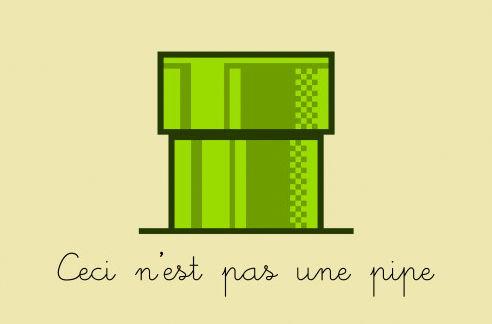
can I be in a museum? Please?
Indies — the Nouvelle Vague of games
Games came from the void of non-existence to a technical experiment to a sort-of-a-toy-thing to a form of art. Now, as many forms of art reaching maturity, they want to change you. For good. Some games don’t even want to entertain you, they want to make you sit away from your own point of view and — even for a split second — see a world with different colours. That’s some Godard shit (but hopefully a little less pretentious).
How did this ever happen? Well, economics.
The boom of games in the 1980s and the 1990s was propelled by big corporations with blatant the-ball-is-mine-you-cant-play policies. Bunch of assholes. The game world was restricted to their bubble.
But eventually the world moved on, PCs started to dominate absolutely everything about our miserable lives and making games became a thing. New softwares, new forums. Nobody was making much money, but people were making some magic.
Then our lord and savior came.

bless our souls, Gabe
Smoke that Steam, boy
Some genius had the idea: hey, let’s make an ebay of games — let’s call it Steam. Anybody can add their own game, anybody can buy any game. There’s no physical goods, so logistics are quite easy to figure out. The question is: are you ready for a miracle?
You see, until this moment of revelation on the top of a mountain (or most probably a humongous pile of sweet sweet money), I’d say that only 3000 teams had the power to actually put a game in the market and make a living out of it. Now this number increased to — every human out of the poverty zone. That’s a lot of brains.
Photographers make sarcastic comments about how everyone now thinks they are also professionals with their automatic DSLR cameras and stupid hipster filters. Well, if your definition of a professional photographer is “somebody who pays the bills out of photography”, I guess a lot of instagrammers are pretty successful photographers — but I digress. No I don’t, my point is: now everyone can make a living out of games if they are competent in game-making, marketing and they fit Steam’s prerequisites.
Don’t believe me? There’s a very successful game about being a crazy goat, it’s called Goat Simulator. It was developed in 4 months. It feels stupid, it looks weird, but it is also most probably a more relevant cultural phenomenon than… well…. me and you (unless you’re Tarantino or something) (in which case hi).

not even joking
Back to Meditation
This whole background allowed different people to get into the game scene. Humans with different ideas and aspirations. Sometimes, people who cared about those inner layers of the consciousness onion.
It’s normal to think about that book that changed you in a deeper way. There’s always a movie that speaks directly to your soul. The song that makes you cry.
How about the game that really changed your perspective on love and death? If this sounds weird, out of place, then the next lines are specially crafted for you.
I don’t expect you to enjoy these games, heck, I don’t expect you to play them. But just by reading about them is already a big step for our medium. If you are a thoughtful non-gamer, it will be a pleasure for us to introduce you to our passion.
So let’s have a look at some mind expansion games.

oooooommmmm level 20
Journey
What does it mean to be a hero? According to Joseph Campbell, American mythologist, it means pretty much the same for every culture that ever existed. This amazing man researched ancient and new traditions for decades and that was his final conclusion — there is only one myth.
Harry Potter, Hercules, Snow White, Queen Boudica, Buddha, Marie Curie. Very different stories, all heroes. The hero is an archetype.
Of course, you could read Campbell’s book. Or you could live it.
In this beautiful game you experience the hero’s journey. Every single step. Featuring an art style drawing from all parts of the world and not a single spoken word, it is a true journey — and will probably make you remember a lot of stuff you’re not expecting to.
As Campbell says: the figure of the mender of souls, the master of the depths of the mind now is fulfilled by the therapist. In ancient times, it used to be the shaman.
Allow this game to be your shaman for a couple of hours.
The Stanley Parable
Do you realise that the act of playing a videogame is really dull — staring at a screen, almost unmoving and pressing buttons from time to time. It is the most comically zombifying experience one can have.
Do you realise that you’re also doing this right now? Staring at a screen, almost unmoving and pressing buttons from time to time. If I tell you I’m controlling your right now and I command you to keep on reading till the end… will you be a sheep and follow my instructions? Or will you feel empowered and close your browser tab — oh what a heroic feat! You rebelled against a blog post.
In a flurry of really well written and recorded dialogue, The Stanley Parable confronts you with those questions: who’s in charge? Are you in charge of your own actions, Stanley?
It is HI-LA-RI-OUS. Also you may want to escape from society and become a hermit after playing it for a couple of hours. Worry not, it’s just a regular side effect.
Everything
How do you make a game about everything? What is everything anyway?
This game is a playable translation of professor Alan Watts’ lectures. So much so that you can actually hear the recorded lectures while you play the game — they are fascinating. So, not to spoil the good bits, let me explain the experience quoting another thinker:
Miyamoto Musashi is considered the greatest samurai of all times. Later in life he retired to a life of solitude in the mountains — where he wrote 5 books. The books talk about swordfighting and the way of the warrior, but they also talk about philosophy and how to understand and relate to this world. You see, Musashi had fought so much in his life — that he started to see the other side of fighting.
To him, a samurai training his battle skills, a monk pursuing the path to enlightenment and a drag queen perfecting her makeup to win RuPaul’s Race are essentially different forms of the same phenomena. That’s why Musashi can talk about swords and end up talking about… well, everything.
Have you ever felt that you were part of something bigger? You can play this feeling now.
Wrap up
I hope I inspired someone. Those are some of my favourite games and they most definitely expanded my consciousness. As I said, I don’t expect you to play them — but I’m glad you were willing to read about the mystery — this occult world that only certain people with a magic language can participate.
We are actually pretty open.
If you read this ‘till the very last sentence, let me invite you to participate in a small social experiment: I’ll ask you to comment this text with the name and colour of your spirit animal. If don’t know yours, you can create one, it’s cool. Pick an animal you respect.
The post Consciousness-expansion games appeared first on Seats2meet.
10 Reasons to work on the beach during the winter
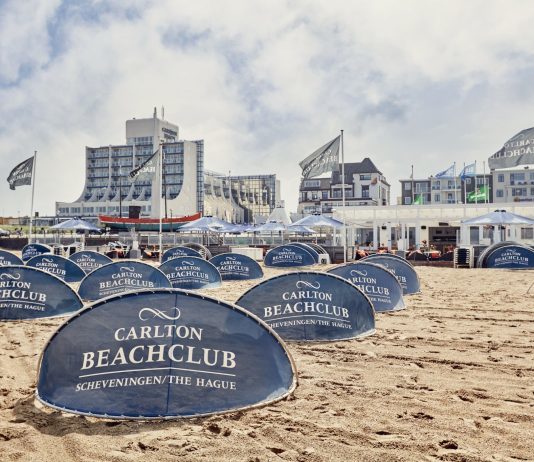
The most recent location to join the Seats2meet.com platform and welcome freelancers and entrepreneurs for social capital is Carlton Beach, in Scheveningen. The hotel now has a structure to welcome anyone to cowork and you don’t have to wait until the summer to work with a beach view. For that, we compiled 10 reasons to work on the beach this winter.
The benefits of being nearby the beach were already proven
And it doesn’t matter in which season, being nearby the beach can reduce anxiety and stress. Beyond that, it can also boost your creativity! You can read more about in the book Blue Mind by marine biologist Wallace J. Nichols.
2. Getting out of your routine makes you more creative
If you work at the same location every day this might be killing your creativity. Going to a new place stimulates your brain and creates new associations, making your more creative.
3. Early sunsets and late sunrise!
It’s hard to think good of the short days, but one thing that we can’t deny is that is way easier to see the sunrise when it is at 8 am. Seeing it at the beach then? What a show! Enjoy the winter to appreciate this true nature’s spectacle without waking up super early. You can enjoy it while taking a walk in the dunes, have a breakfast and then start working at Carlton Beach at 11 am.
4. Get a boost for your energy!
The beach is already enough to renovate our energies. But at Carlton Beach, you can sum it with a raw lunch, a free fitness pass (if you work there) until the end of the year. That combo played together is the perfect booster for anyone suffering from winter sadness.
5. Get some fresh air at the dunes
Work is not all sitting in front of a computer. On the beach, you can take a break to walk through the dunes, listen to the waves and feel the ocean breeze. The good point of making it in the winter? You have the whole thing for yourself, or almost only for yourself.
6. Don’t feel like living? You are in a hotel
The cool thing about working on a hotel? You don’t have to leave by the end of the day! If you feel like enjoying more of your surroundings you can always book a room.
7. No freezing at your way there
The hotel stays right in front a bus stop. Don’t botter about freezing your hand while holding to your bike. Or froze your feet while walking.
8. You can also host your meeting there!
Are you having a meeting? No problems! Carlton Beach also has 7 meeting space with a view to the ocean. Perfect if you want to surprise your attendees with an inspirational and warm feeling.
9. Treat yourself
Another advantage of working in a hotel lounge? You can treat yourself and go to a Sauna, which is perfect for cold winter days, that is not for social capital, but or a small fee. Stay warm!
10. Enjoy the Holiday Vibe without leaving your country
As Nynke Willemsen already wrote in this article, there are many ways to keep that holiday vibe you have after a nice trip in your own country, or even in your city. Visiting places you’ve never been in your own country counts as one of them.
Book your seat at Carlton Beach on seats2meet.com
The post 10 Reasons to work on the beach during the winter appeared first on Seats2meet.
November 19, 2017
Stichting Sep Schuddeboom
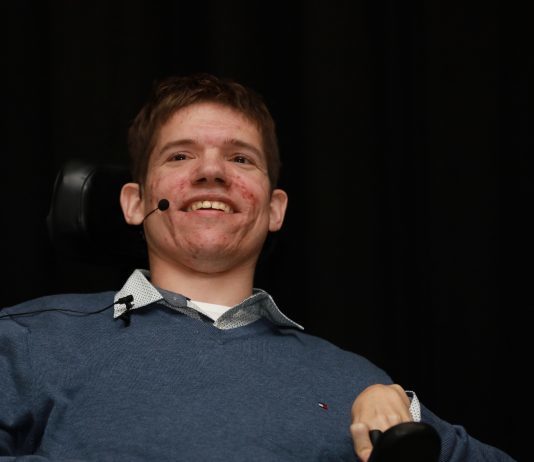
(Foto is gemaakt door Henk-Jan Winkeldermaat van Punkmedia.nl)
The flagship store Seats2meet.com Utrecht CS (S2M030) bestaat 10 jaar. Op maandag 27 november organiseren we daarom een festival, omdat we graag ons succesverhaal blijven vertellen en delen met het S2M (toekomstige) stakeholders waardenetwerk.
Een van de waardevolle ambassadeurs van het eerste uur is Niels Schuddeboom (35 jaar). Niels komt al jaren bij S2M en hoort volledig bij de familie. Hij houdt zich bezig met het vernieuwen en verbinden van mensen en organisaties in de Zorg- en Welzijnssector. Het doorbreken van systemen en patronen doet hij door een goede dosis humor en het blijven stellen van vragen. Hij is een inspirerende facilitator, spreker, publicist en moderator. Hij onderneemt vanuit zijn bedrijf Shakingtree. Wil je meer weten over Niels? Dit is zijn website.
Waarom doen we deze crowdfundingscampagne? We zijn allemaal erg verdrietig, omdat Niels ernstig ziek is en niet lang meer in ons midden zal zijn. Niels heeft een aangeboren spastische aandoening, waardoor hij zijn leven lang al in een rolstoel zit. Sinds een jaar heeft hij een agressieve en kwaadaardige kanker, die voortkomt uit een erfelijk overgedragen gen van zijn moeder die eveneens op jonge leeftijd hier aan overleed. Zijn leven staat in het teken van zorg, maar ook in het teken van samen goed doen en veranderingen stimuleren.
Samen met Sanne heeft Niels een zoon, Sep Schuddeboom. Sep is jarig op 23 november, die dag wordt hij 2 jaar. Om ervoor te zorgen dat Sep later zorgeloos kan studeren en opgroeien heeft Niels de stichting Sep Schuddeboom opgezet. Met deze campagne willen wij een boost geven aan de stichting.
We gebruiken hiervoor Whydonate. Je kan een donatie doen vanaf elk gewenst bedrag en dit gaat via Ideal of Incasso, waar je zelf voor kiest. We danken iedereen enorm die bij wil dragen aan de stichting Sep Schuddeboom.
Hier vind je de link naar Whydonate.
In het teken van het 10 jarige bestaan van Seats2meet interviewde Arianne Wienke Niels over zijn ervaringen binnen Seats2meet. hier lees je het interview dat Arianne Wienke met hem deed.
Ps: Heb jij je al aangemeld voor het S2M festival op maandag 27 november of moet je dat nog doen? Dat kan, voor 20 november via festival.seats2meet.com. Denk je aan een kadootje? Dan vragen we je om een gift te doen aan de stichting Sep Schuddeboom.
Vragen? Stuur hier ons een bericht.
The post Stichting Sep Schuddeboom appeared first on Seats2meet.
More About: Gadgets

All The Stuff You Want, But Don’t Need
Gadgets are cool! Gadgets are useless! Gadgets make life more fun! Yes, we all want gadgets, even if it’s just to play with it once and then throw it away. They are fun to have and fun to give away. Some of them are expensive, some are really cheap. Some make your life easier, some just clog up the room or look pretty.
There are many gadgets out there, in many categories. You can find four categories below of which we found a great deal of cool gadget videos:
Hobbies and sports
Audio, visual and entertainment
Wireless, connect and print
Education
Hobbies and sports
Whether you like indoor or outdoor activities, both of them can become more fun with these little gadgets. Never get lost on your bike ride with the Shima AR glasses or the Beeline digital compass. Still on your bike at night times? Turn on the rechargeable MonkeyLights and make yourself visible for other road users. Going on the water? Try the PowerRay drone that will help you see, feed and catch the fish!
Make your own music with the Tuna Knobs that can be added to any touchscreen devices to give you that old-school DJ feeling or the Freedrum virtual drumkit that you can take anywhere you go. Creatives, pay attention! Try out the MakeyMakey kit that can make any object into a touchpad or use Scribble, a smart pen that lets you write or draw in any color simply by scanning the objects around you for the color you want.
Audio, visual and entertainment
When you’re on the road, tune in to the latest Spotify lists with the Zungle Panther glasses that use bone conduction to spread audio waves and the Basslet, world’s first wearable subwoofer. When you’re in a home setting, you might prefer the beautiful and floating Cloud speaker for the best audio.
Like tinkering with Photoshop and video editing programs? Have you also tried Adobe’s newest voice-adjusting software: Voco? And check out this interchangeable Sensel Morph touchpad which can transform from a regular keyboard to piano keys or a DJ set.
For everybody who’s more into visuals and screens, look into this 24 inch pop-up SPUD display that you can take anywhere. A more immersive experience can be arranged with Razer’s Ariana, an amazing beamer perfect for gaming.
And everybody who cannot get enough of sharing their daily lives with their friends, you can choose sunglasses that incorporate a camera such as the Snap Incl.’s Spectacles which upload 10-second videos to Snapchat or the Blincam, attach it your glasses and it takes pictures when you blink.
Wireless, connect and print
When you’re looking for products that make your life easier, you’ve come to the right place. This beautifully designed OvRcharge by AR Designs charges your phone wirelessly and makes your devices float! If you want a longer range, you might be interested in the Cota by Ossia, a wireless power hub that charges all your devices within 9 meters. A third notable charger, mainly because is fun, is the self-powered Moxi stroller battery which can charge your phone and track your walk. But a full battery isn’t the only hurdle in this fast-paced world; we also need a decent internet connection. In come the small Plume pods that you install in every room and optimize your WiFi.
Way further down on the needs-list are printers. However, sometimes you just need to print travel documents, concert tickets or papers. How cool is it, that you can now use this Zuta printer that fits into your pocket? Or print your own creations via the OLO Smartphone 3D-printer?
Education
In this last gadget category we find a lot of toys that are aimed at educating your children. How about the Fisher-Price Smart Cycle that combines learning with exercise? Or the handcrafted wooden AVAKAI doll which learns kids how to socialize?
We also find a lot of toys that focus on teaching kids how to code: from the LEGO Boost robots and the interactive Cubetto robot, to the modular Airblock drone.
Silly gadgets
We’ve tried to keep all the silly and useless gadgets out of this overview. But somehow this video of Modobag keeps popping up. It’s the world’s first motorized luggage and probably the last. It looks silly. Oh, and this concept for a Netflix switch which supposedly dims the lights, orders food and starts your favorite series.
Watch more Gadgets videos.
The post More About: Gadgets appeared first on Seats2meet.
Duiding in de klusjeseconomie | Nieuwe geldkraan Uber? | Transparantie en bias in algoritmes
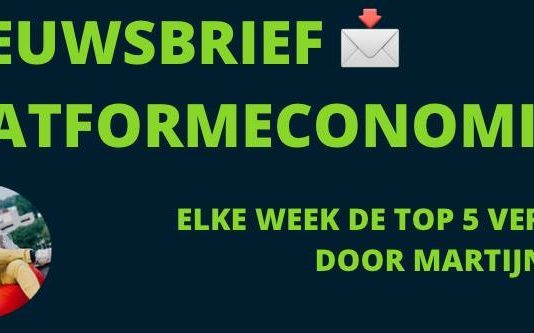
Na een bezoek aan Brussel en New York weer geland op Nederlandse bodem. In New York bezocht ik een congres over platform coöperaties, waar in ik in 3 dagen veel nieuwe inzichten heb verkregen die weer een hoop inzichten en food4thought hebben opgeleverd. De meeste talks zijn op video terug te zien. De talk van Juliet Schor (resultaten onderzoek naar een van de meest succesvolle platform coops Stocksy), het Breakout Panel – Next Labor: Designing Platform Cooperatives in a Worker-Centered Wayen de registratie van een public event ‘what happened to the future’ onderleiding van Douglas Rushkoff zijn zeker de moeite van het terugkijken waard. Ook zal ik mijn gedachten later nog in een blog delen.
Afgelopen week was er zowel in Den Haag als in de media weer de nodige aandacht voor de klusjeseconomie (arbeid via platformen) en mocht ik duiding geven in artikelen voor de NOS en Flexnieuws.nl. Ook deze week heb ik weer 5 artikelen voor je uitgezocht en van mijn duiding voorzien. Fijne week!
Platformeconomie top 5
Uber loses court appeal against drivers' rights – BBC News
In veel landen is er veel discussie over de vraag: is iemand die via een platform werkt in de klusjeseconomie (de gig economy) nu een zelfstandig ondernemer of een werknemer. Want hoe zelfstandig ben je als je voor je inkomen afhankelijk bent van een platform, je het merk van het platform uitdraagt, de route en klantcontacten worden bepaald door het platform en je ook niet je eigen prijs kunt bepalen?
Onderdeel van deze discussie is ook de vraag om een hervorming (of heroverweging) van ons huidige stelsel met de vraag of sociale zekerheden niet moeten worden losgekoppeld van het dienstverband.
5 Interessante linkjes om te verkennen op dit vlak:
Afgelopen donderdag was er een rondetafel sessie in de 2e Kamer over de klusjeseconomie. Aanleiding is de stap die Deliveroo heeft gezet om hun koeriers te verplichten om ZZP’er te worden en om de betaling van een uurloon naar een stuksloon aan te passen. Via deze link kun je de hele sessie terugkijken én krijg je toegang tot een aantal interessante ‘position papers’ van verschillende stakeholders in deze discussie;
Ook de NOS besteedde afgelopen week aandacht aan deze discussie. In een duidelijke video (disclaimer: ik mocht op de achtergrond input leveren) wordt de klusjeseconomie en de belangrijkste vraagstukken aangesneden. In de begeleidende blog wordt de discussie ook vanuit diverse invalshoeken belicht;
In de VS heeft Uber 100 chauffeurs gedeactiveerd (in het artikel wordt het woord ‘ontslagen’ gebruikt, maar dat is juridisch niet juist, maar het komt wel op het zelfde neer) omdat zij alleen wilden rijden op momenten dat er een ‘surge pricing’ was. Op zo’n moment is de vraag naar Uber taxi’s hoger dan het aanbod en zet Uber een vermenigvuldiger in op de ritprijs om vraag omlaag en aanbod omhoog te krijgen. Deze chauffeurs weigerden ritjes aan te nemen buiten de ‘surge pricing’ periodes, wat tegen de ‘community guidelines’ van Uber is. De vraag die bij mij naar boven komt is: in hoeverre botsen de zelf opgezette community guidelines met de wet?;
Een tweet van Jeremias Prassl (zie ook deze video van een eerdere presentatie): “London Central Arbitration Cttee finds that @Deliveroo cyclists are not workers for purposes of union recognition b/c of substitution clause in contract. [NB – not same as Employment Tribunal; it’s a specialised collective labour law body]” Hieruit blijkt maar weer dat de discussie altijd ingewikkelder is dan je in eerste instantie denkt.
De video’s van het ‘Reshaping Work in the Platform Economy’ conference en dan in het bijzonder de presentaties van Jeremias Prassl en Benjamin Sachs.
In het geval van Uber (link in de titel van dit bericht) deed de rechter in de UK afgelopen week een duidelijke uitspraak: de chauffeurs die voor Uber rijden zijn werknemer van het bedrijf en hebben recht op alle voordelen die bij de werknemersstatus hoort.
Het is duidelijk dat deze discussie nog lang niet voorbij is….
Een nieuwe geldkraan voor Uber – NRC
Uber krijgt een nieuwe investering van 10 miljard dollar. Dat is het verhaal naar buiten. In werkelijkheid is het verhaal ‘iets’ genuanceerder. Uit het NRC stuk: “Maandag bevestigde Uber dat een investeringsfonds van het Japanse techconcern Softbank van plan is om 10 miljard dollar (8,6 miljard euro) in de Amerikaanse deelrittendienst te steken. Het gaat om een belang van zo’n 14 procent in Uber” > Er wordt dus 10 miljard betaald voor 14 procent van de aandelen. Tot zover een duidelijk verhaal.
In een artikel op TechCruch blijkt dat het verhaal gecompliceerd is: Softbank investeert 1 miljard in Uber en neemt voor 9 miljard aandelen van bestaande (vroege) investeerders over. “The group led by SoftBank and Dragoneer Investment Group is also expected to invest a much larger amount by buying up to $9 billion in Uber shares from employees and other shareholders, likely bringing its total ownership to at least 14% of the company. These shares are expected to be purchased at a lower valuation, that has still not been determined.”;
Wat valt er nu te zeggen over deze deal? (disclaimer, ik ben geen investeerder, maar probeer mijn gezonde verstand te gebruiken):
De netto investering is 1 miljard dollar;
De waardering van Uber staat nog ter discussie, maar zoals het er nu naar uit ziet niet hoger zijn dan de vorige ronde, wat gezien de discussies over het bedrijf niet heel verrassend is, maar naar aanloop van de beursgang in 2019 niet heel hoopgevend;
De deal is nog verre van zeker (lees ook de update onderaan het TechCrunch stuk);
En tja, 1 miljard klinkt als veel geld (en is het ook), maar als je in het NRC stuk leest dat het bedrijf 645 miljoen dollar verlies leed in het laatste kwartaal, dan staat dit bedrag in een heel ander perspectief. Concurrent Lyft haalde onlangs overigens ook 1 miljard op, alleen is dit bedrijf alleen in de VS actief en heeft het vorige week bekend gemaakt binnenkort ook in Canada live te gaan. Zij hebben dus een veel minder risicovolle strategie, zullen in hun markt in de VS waarschijnlijk al break even draaien en zullen met die 1 miljard het een stuk langer uit houden en gebruiken voor groei in plaats van het dweilen van een kraan die open staat.
To be continued….
“Hotelwebsite Booking.com heeft een overeenkomst gesloten met de gemeente Amsterdam om illegale verhuur van woningen tegen te gaan.” Mooie stap van de gemeente Amsterdam in de strijd om controle te kijken op shortstay verhuur via online platformen. De strategie om duidelijk te communiceren wie er wel en vooral ook wie er niet meewerkt zal vermoed ik wel invloed hebben gehad op het proces.
Het valt mij, ook tijdens het congres in New York, nog steeds op hoe weinig (maar dan ook echt héél weinig) er naar overheden wordt gekeken wanneer men praat over een ‘eerlijke’ platformeconomie. De overheid, nationaal en lokaal, heeft enorm veel invloed in het sturen van ontwikkelingen door belasting, beleid, wetgeving, subsidie en meer. Daarnaast werd er in New York terecht opgemerkt dat de overheid een van de grootste klanten is van bijna alle techbedrijven. Ook via die weg kan de nodige druk worden uitgeoefend. In de praktijk zie ik hier nog weinig van terecht komen. Dan is het natuurlijk makkelijk om te wijzen naar de overheid, maar ook andere stakeholders in de discussie zouden hier meer mee moeten doen en meer op moeten sturen.
The era of blind faith in big data must end | Cathy O'Neil – YouTube
Interessante TED talk van data scientist Cathy O’Neil. “Algorithms decide who gets a loan, who gets a job interview, who gets insurance and much more — but they don’t automatically make things fair.”
Al langer pleit ik voor meer transparantie (eventueel via een ‘trusted 3rd party) in algoritmes. Dit omdat de gebruikers geen inzicht hebben in de variabelen die worden meegenomen. Nog te veel mensen zijn in mijn ogen naïef en denken dat een algoritme van bijvoorbeeld Uber zo is ingericht om een zo goed mogelijke automatische match te maken tussen vraag en aanbod. Dat zit er zeker in, maar intussen weten we echt wel dat er meer variabelen die in dienst staan van de aandeelhouders in algoritmes worden meegenomen. En dat is op zich natuurlijk ook geen rocket science. Bedrijven proberen hun klanten op alle mogelijke manieren te beïnvloeden om gedrag te sturen met als doel winstmaximalisatie. Ik was zelf eerder immers ook marketeer 
November 17, 2017
Toekomst van werk: de platformeconomie
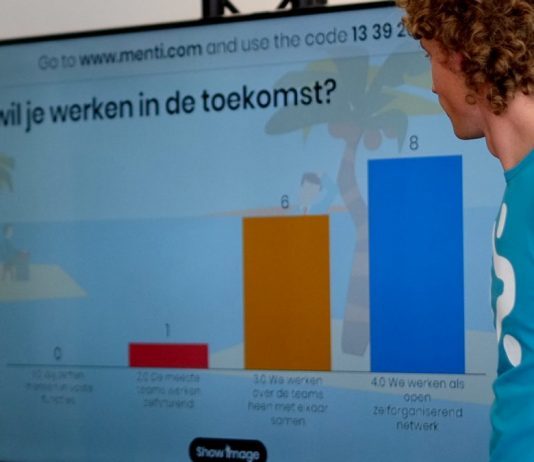
This article was originally published at blog.part-up.com
Onze visie op de platformeconomie
Gewoon rustig doen waar je goed in bent, of knallen in zelfsturende teams? De zogenaamde platformeconomie biedt kansen om de werkomgeving te creëren die bij jou past. Niet iedereen ziet deze kansen. Veel mensen zien bedreigingen in de platforms waarop werkers en klussen flexibel aan elkaar worden verbonden. Part-up is uitgenodigd door de Tweede Kamer om onze visie op de platformeconomie te delen. Een commissie onderzoekt de rol van de overheid en regelgeving in de nabije toekomst. Ter input hiervoor schreef Laurens Waling een visie-paper, met de belangrijkste kansen en uitdagingen voor de komende tijd. Benieuwd hoe wij vanuit Part-up de toekomst zien? Lees dan verder.
Stelling 1: De platformeconomie is een fantastische kans voor iedereen
We zien dat het werken via een platform niet langer iets is voor een selecte groep individuen, maar een trend die alle werkenden raakt. Waaronder mensen in een vaste baan. Organisaties in alle sectoren transformeren naar platforms. Het samenwerken op platforms verhoogt de productiviteit, bespaart op overhead en biedt medewerkers meer plezier in hun werk. Er is steeds meer bewijs dat het zelf kiezen met wie je wilt werken en aan welke opgave, project of cliënt voldoening geef in werk. Het voorkomt stress die 17% in groep 25-35 jaar ervaart en maakt werk zinvoller. Momenteel vindt 40% van alle werkenden hun werk niet zinvol.
Voor organisaties die intern transformeren naar een platform is het een kleine stap om de buitenwereld binnen te laten, en zelf ook een platform te worden in de platformeconomie. Dit is de reden dat Part-up nu kiest om organisaties te helpen om naar platforms te transformeren en zich er in de toekomst op gaat richten om al die losse platforms met elkaar verbinden via één infrastructuur.
Stelling 2: Het dienstverband heeft zijn langste tijd gehad
Wij gaan namelijk niet uit van een bepaald type dienstverband met één organisatie. We zien hybride vormen zoals een basisinkomen, vaste dienstverbanden, tijdelijke contracten, projectfees, uitruil van diensten en vrijwilligerswerk steeds meer door elkaar heen lopen. Vroeger was werken jouw tijd ruilen voor geld. Tegenwoordig meet je jouw waarde niet in uren, maar in resultaat, ongeacht hoeveel tijd iets kost. Het niet meer hoeven najagen van een vast dienstverband geeft rust.
Stelling 3: De relatie opdrachtgever en werkende gaat van verticaal naar horizontaal
Verbinding ontstaat door gedeeld belang. Geen pure afhankelijkheidsrelatie meer, maar betrokkenheid op de bedoeling van het collectief (lees: de organisatie) en de match met de persoonlijke ontwikkeling van het individu. Wij zien horizontale verbindingen ontstaan, waarbij de rol tussen opdrachtgever en werkende regelmatig kan wisselen. Je zult vaak meerdere rollen tegelijkertijd vervullen.
Stelling 4: Flexibiliteit en zekerheden veranderen continu
Willen werkers de zekerheid van een vaste baan, of de zekerheid van altijd voldoende klussen op een marktplaats? Willen werkgevers zekerheid van een vaste workforce, of de zekerheid van toegang tot een onbeperkte bron aan talent? Zowel werkgevers als werknemers zoeken naar meer flexibiliteit, met behoud van zekerheid. We zien hierin nieuwe manieren van flex-werken ontstaan. Bijvoorbeeld talent dat zich dieper verbindt vanuit passie aan een (organisatie)doel. Een vorm van rust, tussen alle snelheid van het projectwerken. Zeker als sociale ondernemer kun je al snel een flexibele schil opbouwen van mensen die graag verbonden zijn met de organisatie, zonder actief dienstverband. Dit clusteren geeft kansen om zekerheden op andere niveaus beleggen. Niet meer bij organisaties en de rollen werkgever / werkende; maar bij collectieven / commons en individuen onderling. We halen nieuwe zekerheden uit Internet en Blockchain ontwikkelingen, die onze reputatie/werkervaring voor altijd vastleggen.
Stelling 5: De rol van de overheid blijft onmisbaar
De huidige wetgeving gaat uit van een zwart-wit wereld (werken / niet werken), met slechts een beperkt aantal rollen (opdrachtgever/opdrachtnemer, werkgever/werknemer). In de platformeconomie bevind je je steeds vaker in grijs gebied. We zien daarom nieuwe rollen voor de overheid:
Oog houden voor de toegankelijkheid, eerlijkheid en veiligheid van platforms voor iedereen.
Ruimte maken voor hybride samenwerkingsvormen/platform werken binnen de systemen van de overheid (binnen rechtsvormen, belastingen, premies, toeslagen, etc.)
Kijk of mensen zich kunnen aansluiten bij collectieven; en of zij daarbij hulp nodig hebben of volledig moeten worden opgevangen met vangnetten
De overheid als (voorbeeld) koploper in de platformeconomie als werkgever van flexibel talent
Wat zijn de kansen?
Platform werken vergroot ondernemerschap en zelfredzaamheid. Het helpt groepen die nu werkeloos aan de kant staan omdat zij niet in een functieprofiel passen aan het werk.
Platform werken biedt groepen die nu vastzitten in hun baan, de mogelijkheid om hieruit te breken en met hun talent aan de slag te gaan
Platform werken biedt enorme kansen voor mensen met een arbeidsbeperking.
Platform werken stelt mensen in staat op hoge leeftijd te blijven participeren.
Platform werken biedt de flexibiliteit om werken te combineren met leren, een gezin, mantelzorg, vrijwilligerswerk, etc.
Platform werken vergroot de productiviteit van individuen en organisaties; en kan een boost voor onze economie en internationale concurrentiepositie betekenen.
Platform werken stelt de overheid in de staat zichzelf flexibel en slagvaardig te organiseren, o.a. in (zorg, onderwijs, veiligheid).
De opkomst van platform organiseren biedt dit een mooie kans voor een maatschappelijke discussie over zinvol werk.
Conclusie
Ons advies voor de Tweede Kamer is om genuanceerd te kijken naar de risico’s die elke nieuwe ontwikkeling met zich meebrengt, vanuit de vele kansen die deze trend biedt. Platform werken is niet alleen van toepassing voor specifieke doelgroepen / sectoren, maar raakt in de nabije toekomst bijna iedereen; wanneer bestaande organisaties/verenigingen/communities transformeren naar platforms. Maak de weg vrij voor een kansrijke nieuwe manier van organiseren van werk!
Bovenstaande punten zijn slechts de highlights uit onze visie. Benieuwd naar onze adviezen hierbij? Download hier de verder uitgewerkte paper.
The post Toekomst van werk: de platformeconomie appeared first on Seats2meet.
“Ik werkgever? Ik geef geen werk meer”
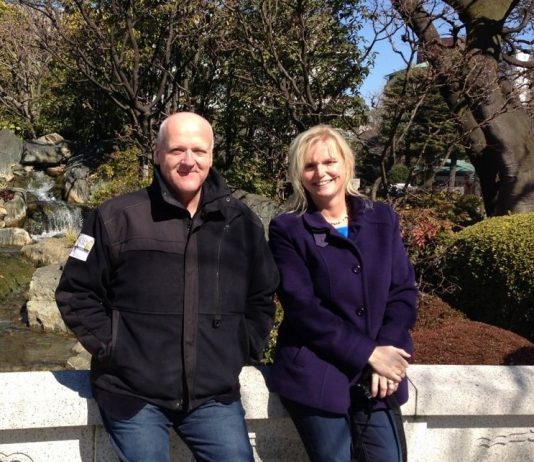
This article was originally published at werkeninnetwerken.nl
Seats2Meet (S2M) bestaat tien jaar. Een mooi moment om in gesprek te gaan met co-founder Ronald van den Hoff. Over zijn grootste zorg: het verdwijnen van de publieke ruimte. Zijn overtuiging dat werken in netwerken de toekomst is en dat vrouwen daarin komen bovendrijven. En zijn voorspelling dat de vijf grootste Nederlandse corporates over vijf tot tien ‘misschien twaalf’ jaar niet meer bestaan. Welkom in de toekomst van werk.
Goed geïnformeerd
Ronald haalt zijn wijsheid uit zo’n 300 dagelijkse newsfeeds en de gang van zaken in zijn eigen onderneming. Via een ingenieus systeem van dashboards en een strakke discipline filtert hij daaruit de grote lijnen. “Eens in de paar weken vat ik dat samen in drie sheets die ik gebruik in mijn presentaties om mijn ideeën te testen. Als het publiek me uitlacht dan zit ik er misschien naast, maar het blijkt meestal in het tempo te zitten. Het is niet een kwestie van óf iets doorbreekt, maar wanneer. Dat is lastig te voorspellen. Ineens zie je nu overal robots op podia verschijnen. Maar ik lees ook elke dag nog de krant hoor; het FD.”
Goed bereikbaar
Het lukt hem om altijd zeer snel antwoord te geven op vragen die hem bereiken. Als je hem mailt krijg je meestal binnen het uur een antwoord. Hoe krijg je dat voor elkaar? “Mijn telefoonnummer is maar in kleine kring bekend. Het staat zelfs niet op mijn visitekaartje. Ik heb gekozen voor e-mail en Twitter als communicatiekanaal. Als je alles openstelt dan word je helemaal gestoord.” Van alle vragen en verzoeken die hij krijgt, stuurt hij het merendeel direct door naar mensen in zijn netwerk. Voor het overgrote deel zijn het mensen die niet meer op de loonlijst staan.
Geen baas
“Er zijn mensen die alleen maar met mij zaken willen doen. Die mensen begrijpen niet hoe de nieuwe economie werkt. Ik ben ervan overtuigd dat veel organisaties met een baas over een paar jaar niet meer bestaan. Ik geef geen werk meer. In tien jaar is het aantal medewerkers in loondienst in mijn bedrijf teruggegaan van 150 naar 15. Dankzij S2M’s nieuwe businessmodel waarin de waarde van sociaal kapitaal wordt gekapitaliseerd. Terugkijkend op de afgelopen tien jaar is hij het meest trots op de lef die hij en zijn compagnon Mariëlle Sijgers hebben gehad dit businessmodel te introduceren. Het was op een moment dat hij voorzag dat de oude business (vergaderaccommodatie verhuren) het lastig zou krijgen. “Ons businessmodel, gebaseerd op een nieuwe balans tussen sociaal en monetair kapitaal is nooit gekopieerd. Niemand durft het aan. Wij delen op jaarbasis 100.000 stoelen tegen sociaal kapitaal en verhuren daarnaast nog steeds vergaderruimte. Co-working was een woord dat niet bestond. Nu is het mainstream geworden.”
Het leeuwendeel van het werk wordt gedaan door 70 à 80.000 mensen uit het S2M ecosysteem. Zij doen ‘gratis’ de marketing, sales, HR, communicatie, helpdesk et cetera. S2M zelf is onderdeel van het netwerk en faciliteert alleen een aantal processen. “De rest organiseert zich vanzelf.” De enige voorwaarde voor een ‘gratis’ werkplek is je aanwezigheid en kennis zichtbaar te maken via het systeem. Op basis van Artificial Intelligence word je gekoppeld aan mensen die je niet kent, maar die wel erg relevant voor je zijn op dat moment. Ook kan S2M, op basis van de data die door dit kennissysteem wordt gegenereerd, het groeitempo en de activiteiten bepalen.
Geen grootdoenerij
“Voor ons zit de groei in het sociaal kapitaal en het delen van kennis. Minder in de omzet. Dat betekent dat je relatief een kleine speler bent en in traditionele ogen niet meetelt.” Ook op wereldschaal ziet hij dat terug. “Nederland behoort (met China en Japan) tot de koplopers op het gebied van werken in netwerken, maar we realiseren onszelf dat niet.”
Ronald werkt al tien jaar samen met Mariëlle Sijgers ‘op basis van gelijkwaardigheid’. “Zij bekijkt zaken vanuit het vrouwelijk perspectief. Dat is echt anders dan mijn kijk op zaken. Zonder dat je er erg in hebt beland je met mannen altijd in een soort rare competitiestrijd. Het gaat altijd over grote getallen, verre reizen, behaalde prijzen en andere waardeloze feiten. Als organisaties gaan halveren dan lost het probleem zich vanzelf op. In de nieuwe economie creëren mensen waarde in netwerken en niet organisaties. Talent komt daarin veel beter tot zijn recht, want er zijn steeds meer mensen die vastlopen. Het is een systeem waarin vrouwen veel beter functioneren dan mannen. Het is een kwestie van tijd dat vrouwen komen bovendrijven.”
“Ik ben geen voorstander van subsidies of vreemd vermogen. Dat maakt je afhankelijk en je moet groeien om aan de diepe-zakken wensen van financiers te voldoen. Wij financieren alles uit eigen middelen en dat beperkt ook je groei. Ik weet dat ik nooit in een Maserati zal rijden, maar daar slaap ik geen nacht minder om. Ik kies bewust voor organische groei. Net zoals bijvoorbeeld Thuisafgehaald. Hun tegenhanger, Thuisbezorgd, koopt met geld van venture capitalists hun marktpositie. Dat wordt nu nog hoger gewaardeerd, omdat alleen naar de financiële kengetallen wordt gekeken. Ook dat is een kwestie van tijd.”
Een ecosysteem
De nieuwe economie heeft niet alleen voordelen. Wie Ronald een beetje kent weet dat hij zich regelmatig opwindt over zaken. Desgevraagd begint hij gelijk over de Sleepwet (“nee”) en het verlies van de publieke ruimte, zoals hij het noemt. “Overal staan camera’s, alles moet ‘smart’ worden. Voor wie? We realiseren ons niet dat onze privacy verdwijnt en daarmee onze identiteit. Als je niet meedoet en jezelf wilt afschermen, dan ben je verdacht. Het volk is niet dom. Den Haag is er voor ons en niet andersom. Laten ze een fatsoenlijk systeem voor een referendum bedenken.” Het boek Homo Deus beangstigt hem. Daarin heeft artificial intelligence de autonomie van de mens overgenomen en zijn we een marionet geworden in een ander systeem. “Daar moeten we voor waken.”

Als het aan Ronald ligt dan maakt hij met S2M in de toekomst deel uit van een ecosysteem waarin het delen van kennis ook financieel wordt beloond. “Dat kunnen we nooit alleen”.
Op 27 november wordt het jubileum gevierd in Utrecht. “Met veel jeugd en vrouwen op het podium”, belooft hij.
Irmgard Bomers is initiatiefnemer van WIN (werken in netwerken). Voor haar werk interviewt ze regelmatig mensen over de toekomst van werk.
The post “Ik werkgever? Ik geef geen werk meer” appeared first on Seats2meet.
In the spotlight: Niels Schuddeboom

(Foto is gemaakt door Henk-Jan Winkeldermaat van Punkmedia.nl)
Niels Schuddeboom is ondernemer vanuit Shakingtree
In het begin van S2M030 waren het bijna allemaal idealisten.
Via Nils Roemen, die hij kende van een Durf te vragen sessie (#DTV) kwam Niels voor het eerst bij S2M030. En dat bleek een schot in de roos, een ideale uitvalsbasis omdat het dichtbij het station zit .
Vanaf het begin heeft hij zich altijd welkom gevoeld. Die herkenning heeft natuurlijk te maken met alles wat hij heeft ondernomen met en voor S2M. Te veel om op te noemen maar om een idee te geven: Niels heeft workshops gegeven oa bij het Fris-in –je-hoofd event. Hij participeerde in brainstormsessies (vaak over mooie nieuwe initiatieven). Hij heeft vorig jaar nog een reeks videoverhalen gemaakt binnen S2M030 en hij coachte een heel aantal medewerkers in Utrecht
Graag had hij nog meegedacht aan het Social Impact Lab bij de Social Impact Factory, door tijdgebrek gaat dat echter niet lukken. Hij heeft alle vertrouwen in zijn collega ondernemers die dat van hem overnemen .
Seats2meet.com is als een bijenkorf.
Mensen vliegen in en uit, sommigen komen terug, anderen blijven weg. Een plek van veel dynamiek en een plek voor nieuwe voedingstoffen. Sommige mensen maken echt een vlucht en anderen blijven een beetje hangen. Sommigen zouden ook best harder willen vliegen dan ze nu gaan. Voorbeeld van iemand die hard gaat in zijn ogen is Madelon Eelderink.
De juiste man op de juiste plek.
De opleiding Appreciative Inquiry van Cees Hoogendijk was een waardevolle toevoeging aan het kennis arsenaal van Niels. Naast kennis heeft hij ook een paar goede vrienden overgehouden aan de opleiding. Niels bleek de juiste man op de juiste plek te zijn, er kwam namelijk onverwacht een plek vrij voor deze opleiding en voilà daar was een zeer gemotiveerde Niels.
Je moet een beetje kunnen ontspannen en daar heb je humor voor nodig, dat moet je niet vergeten als je iets wilt veranderen.
Ook ziet hij de humor in soms rare situaties. Hij kan zich bijvoorbeeld de enorme wachtrij voor de deur bij S2M Utrecht nog levendig herinneren. Allemaal voor het evenement Social Powerhouse. Door de aangekondigde aanwezigheid van Koningin Maxima waren er scherpe controle maatregelen. Toen het evenement eenmaal was begonnen bleek het succes al gauw erg aanstekelijk en was de wachtrij gauw vergeten.
Ook herinnert hij zich nog goed hoe hij heeft gegniffeld over de geïrriteerde reacties van mensen in de lounge die werden bevraagd op wat ze doen. De onterechte geïrriteerde mensen waren ‘toch lekker aan het werk’ en wilden eigenlijk niet in gesprek. Maar ja, als je aan het Netwerkleed-tafel van Daphne van Mourik gaat zitten vraag je daar natuurlijk wel om.
Over 10 jaar staan er om S2M geen muren meer heen; het is een open plein.
Dat plein dat bedacht is door 2 hele lieve en leuke mensen. En als je een muur nodig hebt dan mag je die gewoon optrekken, geheel modulair. De hamburgers komen dan trouwens niet meer van de kok uit de keuken maar uit de printer.
Blijf ondernemen en blijf bewegen.
Hij was nooit doorgegaan met ondernemen als hij niet in S2M zoveel mensen had ontmoet die dat ook deden. Hij vindt de berichten op FB van business coaches dat je perse €120.000 per jaar moet verdienen lulkoek. Je moet er van kunnen leven en je mag er best een tijd overdoen om dat uit te zoeken.
Vroeger trok hij iemand aan zijn jas als hij iets nodig had of als hij iets niet wist. Dat kan nu inmiddels ook via de Serendipity Machine. De groep is nu zo groot geworden dat je niet iedereen meer kan kennen.
Wees zo ‘brutaal’ om een vraag te stellen. Zo kom je een heel eind. Zijn gecrowdfunde (rolstoel)bus was nooit gerealiseerd als hij niet aangegeven had waar zijn behoefte lag. Zijn advies aan ons:
Laat je kwetsbaarheid zien
The post In the spotlight: Niels Schuddeboom appeared first on Seats2meet.
TIS Picks: 5 Top Sharing Economy Videos
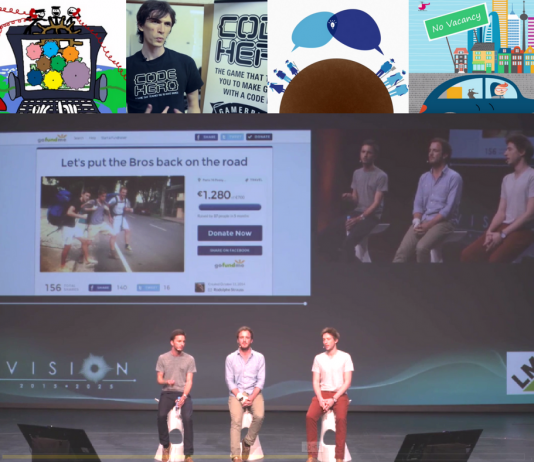
The sharing economy (collaborative economy) is an emerging socio-economic movement aimed at shared consumption of goods and services. Often making use of some form of communication technology (apps or websites) the sharing economy forms a vast community of people who share homes , cars , bikes , boats , tools , books , pets , etc. It’s a great step forward and signifies a move away from consumerism. Actively sharing goods and services makes people save money, share experiences and prevent objects to be underutilized. Here’s our pick from the 5 best and most breathtaking videos on the Sharing Economy.
1. Sharing Economy 101
You’ve heard of Taskrabbit, Couchsurfing and maybe some of the smaller platforms, but what is the sharing economy about? And why is it so important? This short animated video will answer the most pressing questions.
Just watched TIS.tv: An Animated Overview of the Sharing Economy
According to Elena L. ‟A nice, animated video to understand what the Sharing Economy is and why it is important in…www.tis.tv
2. Peer2peer — put into practice!
Now we know what the collaborative economy is about, let’s see whether it actually works! These three friends put it to test and traveled 21.000 km by solely using sharing economy platforms and communities. They made a video log of their adventures and this is their final report.
Just watched TIS.tv: The Sharing Bros #12 – The Great Debrief
According to Simone de Bruin ‟The final video of the Sharing Bros who aimed to travel 21.000km by only using the…www.tis.tv
3. Sharing communities and cities
Collaborative Cities is a worthwhile documentary featuring stories of people from Europe and North America who have come together to share resources, knowledge and/or facilities. Have you already heard of Park Slope Food Coop, KissKissBankBank or Not Far From The Tree?
Just watched TIS.tv: Collaborative Cities: The Documentary (EN)
According to Elena L. ‟Collaborative Cities is a documentary about sharing economy projects around cities in Europe and…www.tis.tv
4. Connecting knowledge without internet
Many of the sharing economy platforms rely on internet access, but what if you live in a remote area with no internet? The startup WeFarm connects 120.000(!) farmers from across Kenya, Uganda and Peru via smartphone to access and share vital agricultural information.
Just watched TIS.tv: An introduction to WeFarm
According to Johan Schaap ‟See how a P2P platform is helping small scale farmers with no internet access in Africa and…www.tis.tv
5. Criticism towards the current sharing economy
In the following video Janelle Orsi voices her concern with the current state of the sharing economy: “It seems we have forgotten about the sharing part”. She discusses two fatal design flaws of the larger sharing platforms.
Just watched TIS.tv: The Next Sharing Economy
According to Erwin Blom ‟The sharing economy has forgot about the sharing piece”www.tis.tv
The post TIS Picks: 5 Top Sharing Economy Videos appeared first on Seats2meet.



